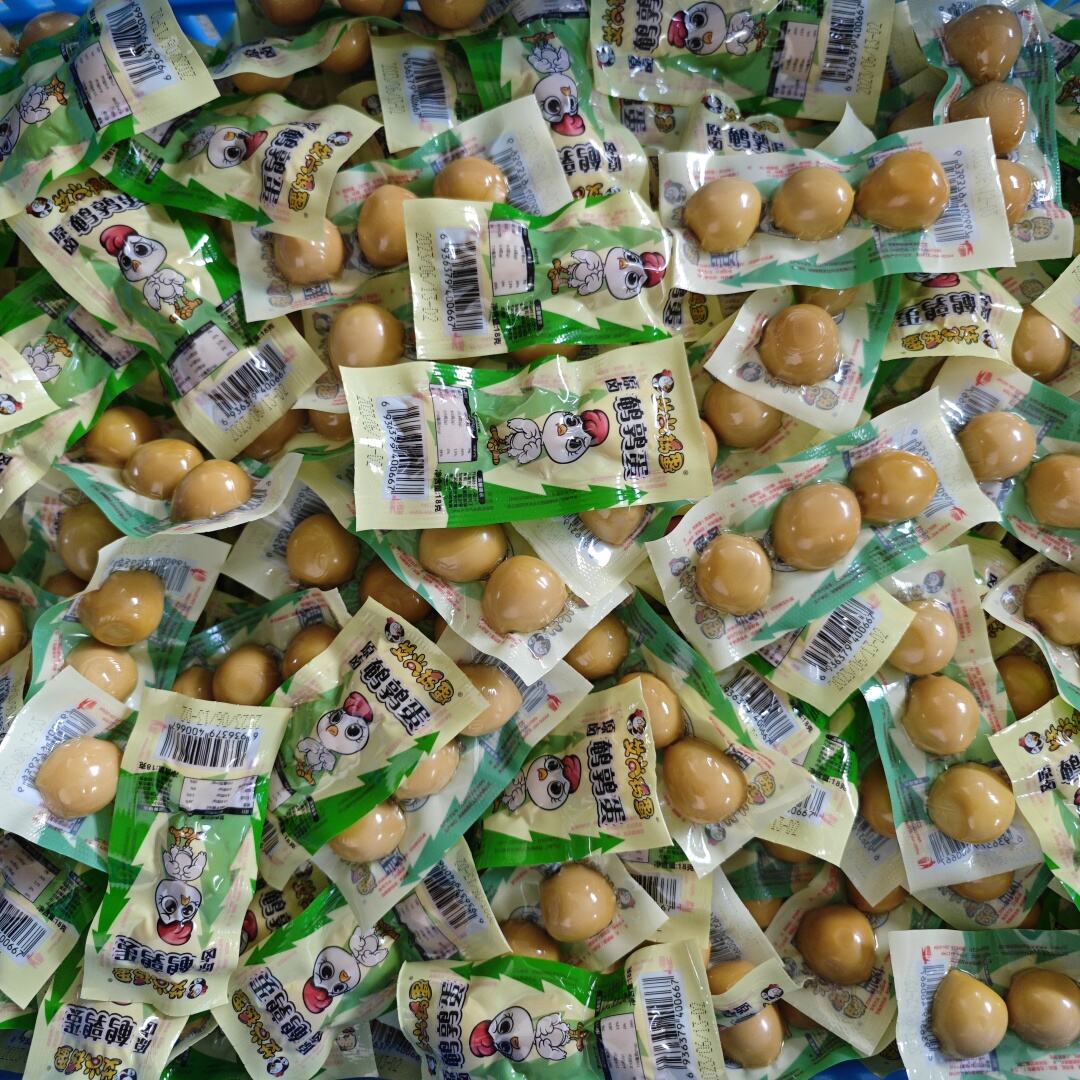αυγά ορτυκιού, ιδίως η ποικιλία Changxiang, γίνονται ολοένα και πιο δημοφιλή λόγω της μοναδικής τους γεύσης και του πλούσιου διατροφικού τους προφίλ. Αυτές οι λιχουδιές περιγράφονται συχνά ως "το τζίνσενγκ των ζώων" λόγω των οφελών τους για την υγεία και της εξαιρετικής τους γεύσης. Σε αντίθεση με τα αυγά κοτόπουλου, τα αυγά ορτυκιού διαθέτουν μια διακριτική, λεπτή γεύση που συμπληρώνει μια ευρεία ποικιλία γαστρονομικών πιάτων. Το μικρό τους μέγεθος, η στίγματα εμφάνιση και η νόστιμη γεύση τους τα καθιστούν μια ελκυστική προσθήκη σε γκουρμέ γεύματα.
Τα αυγά ορτυκιού δεν είναι μόνο γευστικά αλλά και γεμάτα θρεπτικά συστατικά. Είναι πλούσια πηγή πρωτεΐνης, απαραίτητων λιπαρών οξέων, βιταμινών (όπως B1, B2 και D) και μετάλλων (σίδηρος, φώσφορος και κάλιο). Η τακτική κατανάλωση αυτών των αυγών μπορεί να ενισχύσει την ανοσία, να προάγει την υγιή εγκεφαλική δραστηριότητα και να σταθεροποιήσει το νευρικό σύστημα, καθιστώντας τα μια ανώτερη εναλλακτική λύση σε παραδοσιακά αυγά πουλερικών.

Ένας από τους σημαντικούς παράγοντες που συμβάλλουν στο προφίλ γεύσης των αυγών ορτυκιού είναι η παρουσία λιπιδίων, ή λιπαρών, στον κρόκο. Ο μοναδικός συνδυασμός πτητικών ενώσεων που παράγονται κατά τη διάρκεια μεθόδων μαγειρέματος όπως το βράσιμο και το τηγάνισμα είναι ουσιώδης για τη δημιουργία των χαρακτηριστικών αρωμάτων τους. Η θερμική επεξεργασία αλλάζει τα λιπίδια του αυγού, οδηγώντας στη δημιουργία διαφόρων ενώσεων γεύσης που ενισχύουν τη συνολική τους γεύση.
Η οξείδωση των λιπιδίων παίζει κρίσιμο ρόλο στην ανάπτυξη γεύσης, ειδικά σε τρόφιμα που προέρχονται από ζώα. Κατά τη διάρκεια της διαδικασίας μαγειρέματος, ειδικά σε υψηλές θερμοκρασίες, τα λιπίδια διασπώνται, παράγοντας μια πληθώρα πτητικών ενώσεων που συμβάλλουν στο άρωμα. Μελέτες υποδεικνύουν ότι τα λιπίδια που βρίσκονται στα αυγά ορτυκιού, ιδιαίτερα αυτά που περιέχουν λιπαρά οξέα 18 άνθρακα, είναι κρίσιμα για τη δημιουργία γεύσης όταν υποβάλλονται σε θερμικές επεξεργασίες.
Η μέθοδος προετοιμασίας επηρεάζει σημαντικά τη γεύση των αυγών ορτυκιού. Κοινές μαγειρικές τεχνικές περιλαμβάνουν το βράσιμο και το τηγάνισμα. Τα βραστά αυγά ορτυκιού συνήθως μαγειρεύονται γύρω στους 100°C, ενώ το τηγάνισμα συμβαίνει σε υψηλότερες θερμοκρασίες, συχνά μεταξύ 180-200°C. Αυτές οι μέθοδοι μαγειρέματος ξεκινούν πολύπλοκες χημικές αντιδράσεις που οδηγούν σε διακριτά προφίλ γεύσης.
Για να αναλύσουν τις γεύσεις των μαγειρεμένων αυγών ορτυκιού, οι επιστήμονες χρησιμοποιούν διάφορες τεχνικές μέτρησης, συμπεριλαμβανομένης της χρωματογραφίας αερίου-μαζικής φασματομετρίας (GC-MS) και των ηλεκτρονικών μυτών. Η GC-MS επιτρέπει την ταυτοποίηση και ποσοτικοποίηση των πτητικών οργανικών ενώσεων που απελευθερώνονται κατά τη διάρκεια του μαγειρέματος. Εν τω μεταξύ, οι ηλεκτρονικές μύτες προσομοιώνουν την ανθρώπινη οσφρητική ανίχνευση, επιτρέποντας στους ερευνητές να διακρίνουν αποτελεσματικά τις διάφορες ενώσεις αρώματος στους κρόκους των αυγών.
Η έρευνα έχει αναδείξει αξιοσημείωτες γευστικές ενώσεις που υπάρχουν στα αυγά ορτυκιού με βάση τη μέθοδο μαγειρέματος. Τα βραστά αυγά ορτυκιού χαρακτηρίζονται από ενώσεις όπως η 1-Οκτεν-3-όλη και η 2-Μεθυλ-3-οκτανόνη, που τους προσδίδουν μια φρέσκια, κάπως γήινη γεύση. Αντίθετα, τα τηγανητά αυγά αποκαλύπτουν διακριτές αρωματικές νότες όπως η (+)-2-Βορνανόνη και η οκτανάλη, οι οποίες προσφέρουν καβουρδισμένες και παρόμοιες με ποπ κορν νότες. Η αλληλεπίδραση αυτών των πτητικών ενώσεων κατά τη διάρκεια του μαγειρέματος είναι υπεύθυνη για την πλούσια γεύση που απολαμβάνουν οι σεφ και οι γαστρονομικοί ενθουσιώδεις.
Στην ουσία, η μοναδική γεύση των αυγών ορτυκιού Changxiang είναι το αποτέλεσμα μιας σύνθετης αλληλεπίδρασης μεταξύ λιπιδίων και τεχνικών μαγειρέματος. Θερμικές επεξεργασίες όπως το βράσιμο και το τηγάνισμα οδηγούν στη δημιουργία πολλών πτητικών γευστικών ενώσεων που δημιουργούν το διάσημο πλούσιο και ελκυστικό άρωμά τους. Η σημασία των 18-άνθρακων λιπαρών οξέων στο γευστικό προφίλ αναδεικνύει τη διατροφική αξία των αυγών ορτυκιού και ανοίγει δρόμους για περαιτέρω έρευνα στην ανάπτυξη γεύσεων σε παρόμοιες ποικιλίες αυγών.